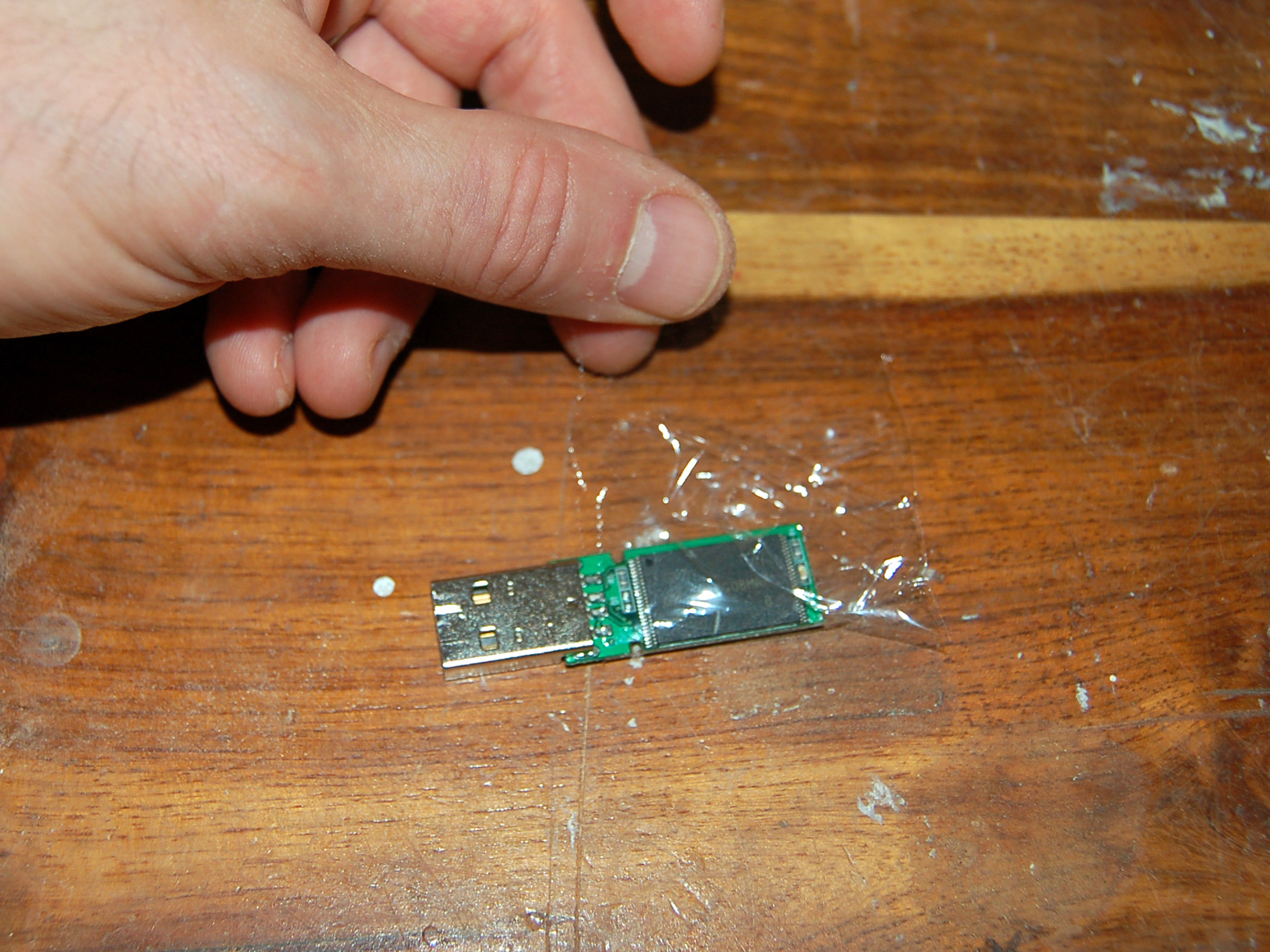Memory sticks lack character. Even the nicest looking ones are more functional than fun. But re-skinning a USB flash drive takes only an hour, max, and unlike a PC case mod, you’ll carry your creation with you. They also make cute gifts (“Thanks for the memories!”).
So far, I’ve done a finger puppet, a ChapStick, and 2 wood blocks, but these mini-mods are limited only by your imagination. Small toys, wine corks, or even a rabbit’s foot are all fair game.
The hardest part is removing the case without damaging the circuit board. Most USB keys can be pried apart, but some require cutting. Then you just need to find the right cover.












